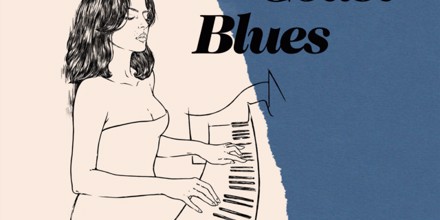West Coast Blues is a distinctive subgenre of blues music that emerged in the mid-20th century on the West Coast of the United States, particularly in California. It is characterized by its smooth, jazz-influenced sound, sophisticated arrangements, and the incorporation of jump blues and swing elements. The development of West Coast Blues can be traced back to several key influences and historical contexts that shaped its unique sound and style.
Early Influences and Migration
The roots of West Coast Blues are deeply intertwined with the Great Migration, the movement of African Americans from the rural South to urban centers in the North and West during the early to mid-20th century. Many blues musicians left the South in search of better economic opportunities and to escape racial segregation and violence. California, with its burgeoning music scene in cities like Los Angeles and Oakland, became a major destination for these migrating artists.
Among the early pioneers who contributed to the development of West Coast Blues were Texas-born musicians who brought their regional styles to California. These included notable artists like T-Bone Walker, Charles Brown, and Pee Wee Crayton. T-Bone Walker, in particular, played a crucial role in shaping the genre. His innovative electric guitar work, which incorporated jazz chords and a smooth, sophisticated style, set the standard for many West Coast Blues guitarists.
The Jump Blues and Swing Influence
West Coast Blues was heavily influenced by jump blues and swing music, which were popular during the 1940s and 1950s. Jump blues, a precursor to rhythm and blues (R&B) and rock and roll, featured up-tempo rhythms, horns, and a strong beat suitable for dancing. Artists like Louis Jordan and his Tympany Five exemplified this style, which in turn influenced West Coast Blues musicians to adopt a more upbeat and danceable sound.
Swing music, with its big bands and intricate arrangements, also left a significant mark on West Coast Blues. Musicians in California were exposed to the vibrant jazz scene, and many blues artists incorporated swing’s sophistication and polish into their music. This blend of blues with jump blues and swing created a distinct sound that was smoother and more polished than the raw, delta blues of the South.
The Urban Blues Scene in California
By the 1940s and 1950s, California’s urban centers had thriving blues scenes with numerous clubs, record labels, and radio stations promoting the music. Los Angeles’ Central Avenue, often referred to as the “West Coast’s Harlem,” became a hub for African American culture and music. The area was home to many nightclubs and venues where blues and jazz musicians performed regularly.
Record labels like Modern Records, Specialty Records, and Aladdin Records played a pivotal role in recording and distributing West Coast Blues music. These labels helped launch the careers of many blues artists, bringing their music to a wider audience. The presence of recording studios and the entertainment industry in Los Angeles also provided opportunities for blues musicians to collaborate with jazz and R&B artists, further enriching the West Coast Blues sound.
Key Artists and Their Contributions
Several key artists emerged as leading figures in West Coast Blues, each contributing their unique style and innovations to the genre:
- T-Bone Walker: Known for his electrifying guitar playing and showmanship, Walker’s hits like “Stormy Monday” became blues standards. His ability to blend blues with jazz influences set a high bar for West Coast Blues guitarists.
- Charles Brown: A classically trained pianist and smooth vocalist, Brown’s music had a laid-back, elegant quality. His hit “Driftin’ Blues” became a template for the mellow, piano-driven style that characterized much of West Coast Blues.
- Lowell Fulson: A versatile guitarist and songwriter, Fulson’s work spanned various styles, from traditional blues to more modern R&B sounds. His song “Reconsider Baby” is a classic example of West Coast Blues.
- Pee Wee Crayton: Another influential guitarist, Crayton’s playing was noted for its crisp, clean sound and melodic lines. His recordings for Modern Records helped define the West Coast Blues guitar style.
The Legacy of West Coast Blues
West Coast Blues has had a lasting impact on the broader blues genre and American music as a whole. Its blend of blues, jazz, and swing elements influenced subsequent styles like rock and roll and R&B. The genre’s emphasis on musical sophistication and polished performances set a standard that many artists aspired to.
The legacy of West Coast Blues can be heard in the work of later musicians who drew inspiration from its pioneers. Guitarists like B.B. King and Albert Collins, although not strictly West Coast Blues artists, incorporated elements of the genre into their playing. The smooth, jazz-inflected guitar work and sophisticated arrangements of West Coast Blues continue to resonate in contemporary blues and beyond.
In conclusion, West Coast Blues represents a unique and influential chapter in the history of blues music. Its origins in the migration of African American musicians, its fusion of jump blues and swing, and its development within the vibrant urban blues scenes of California all contributed to its distinctive sound. The contributions of key artists like T-Bone Walker, Charles Brown, and others ensured that West Coast Blues would leave a lasting mark on the musical landscape.


Comments are closed